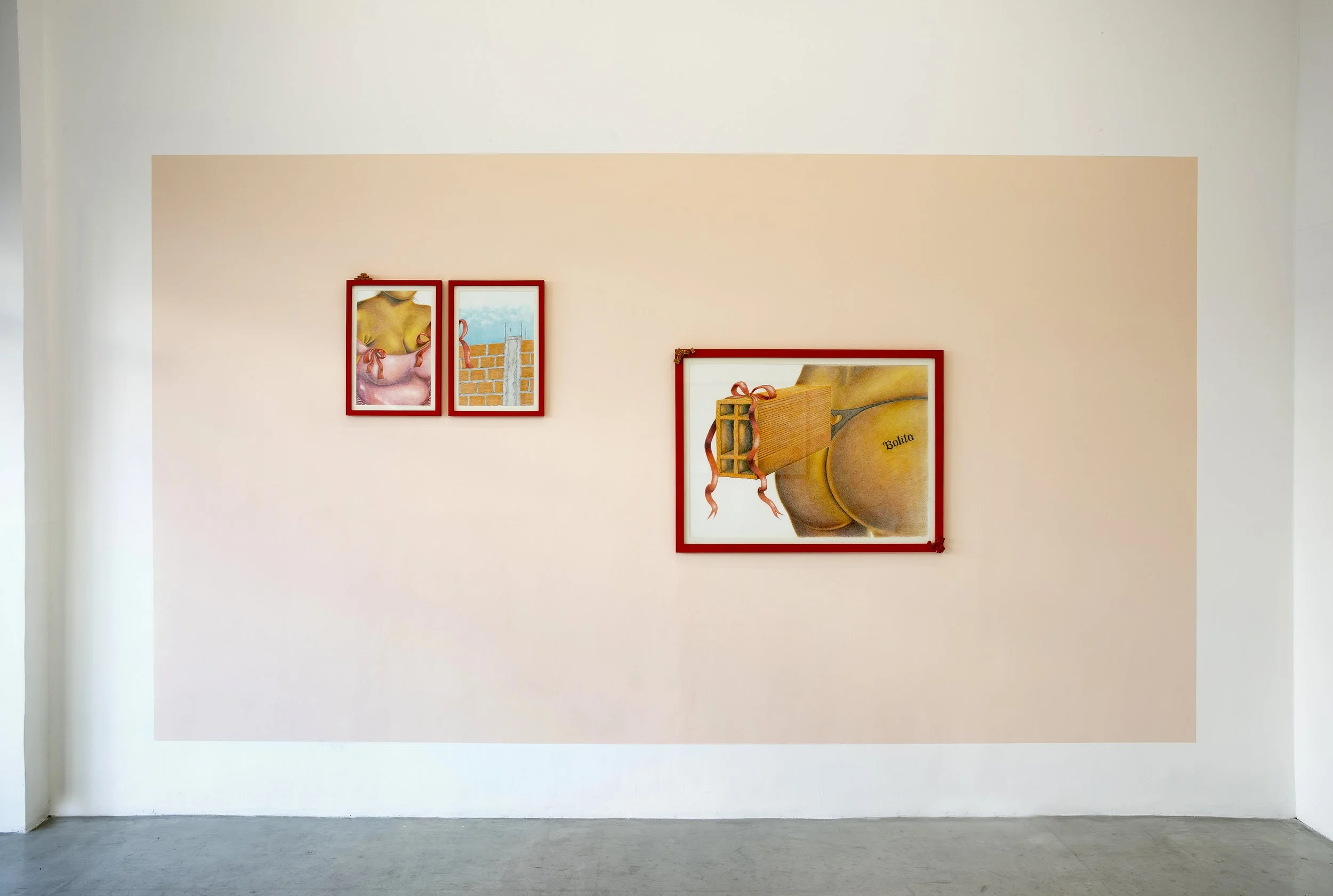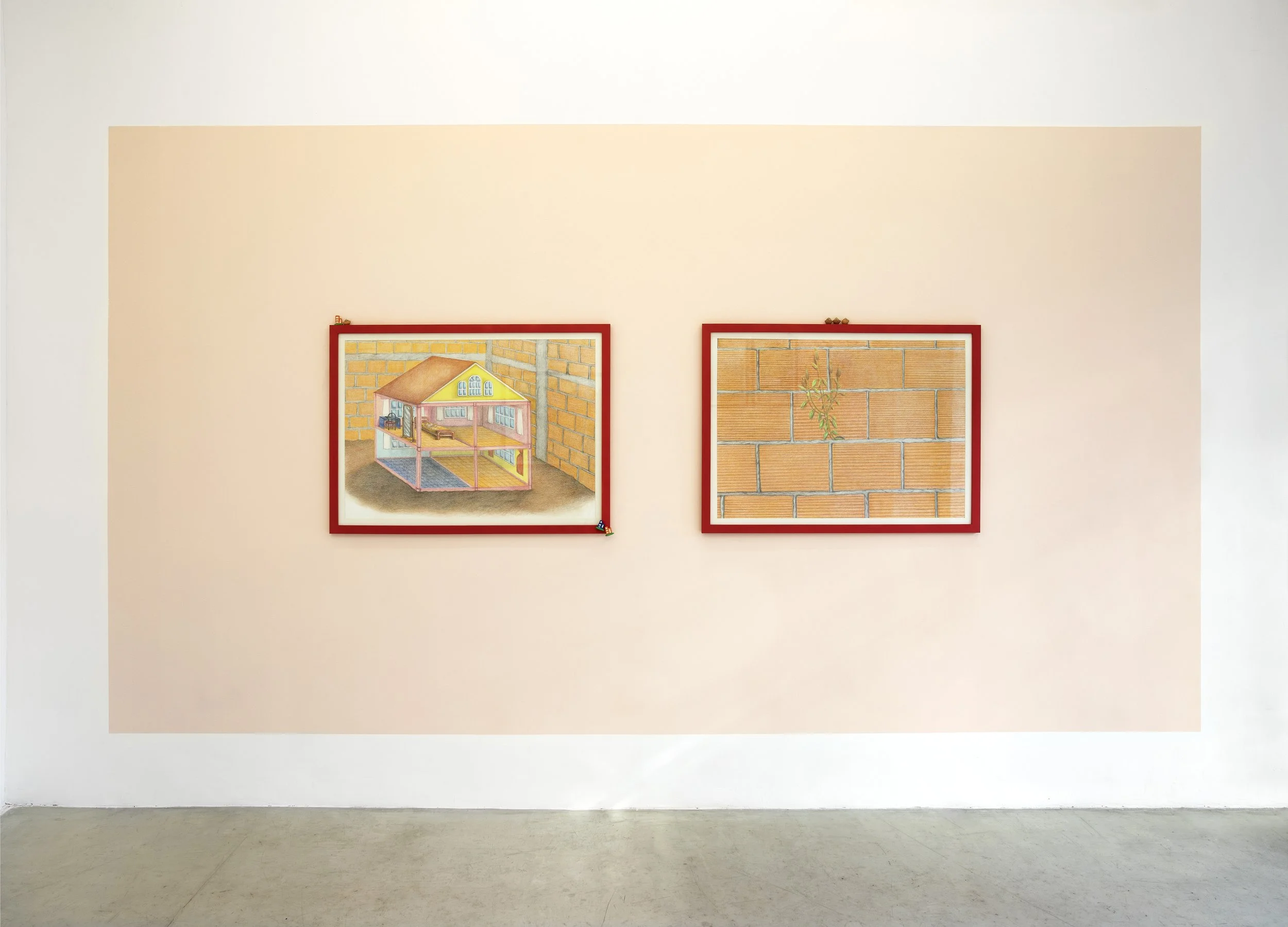Mujer Ladrillo
2025, Polychrome pencil on paper and ceramic
Untitled, 22 x 15 x 1.5 in. Private collection
Entre infiltrada y traidora (diptych), 21.5 x 15 x 1.5 in. each
Quirquiña o Hierba mala siempre crece, 45 x 33 x 1.5 in. Private collection
Villa Soldati, 45 x 33 x 1.5 in. Private collection
Untitled, 43 x 31 x 1.5 in.
Exhibit photos by Nacho Iasparra
Exhibit photos by Nacho Iasparra
“Home permeates every tendon and every cartilage in my body,” writes Gloria Anzaldúa, as she reflects on the impossibility of fulfilling the demands of having a single, indivisible identity. She speaks of betrayals—large and small—of borders and divided bodies, of one's own and others' violence, of belonging and the tug-of-war between inside and outside.
In Flor Alvarado's work, the house expands and grows within the body, or perhaps they grow together; it is difficult to distinguish where one ends and the other begins. With them, tensions and conflicts are also amplified. Her drawings display an aesthetic of exuberance and excess: overflowing, sensual bodies; quirquiñas that, against all odds, grow in the cracks of brick walls; deliberately unfinished constructions that project toward the sky, driven by the pure will to continue growing. In these images, Flor evokes memories of her childhood and the politics of abundance that emanate from Alasitas and the god Ekeko: that tradition of miniature modeling of the object of desire to materialize it. However, here, tradition and the inscription of belonging to a culture become entangled with ambition, the energy of an uncorseted sexuality, and the convergence of desire and entitlement, to spill beyond the norm.
From this encounter, where the multiple identities that inhabit the body become tense and confused, a critical resistance emerges. Within its symbols lies a set of potentially revolutionary desires, precisely because they are poorly positioned in the face of an increasingly violent status quo. What emerges, in opposition to violence, is a soft ontology: a space where the body and the objects that surround it conspire against stereotypes and the paths laid out for them, making their way through a sexy and playful fantasy from which Mujer Ladrillo is born.
The dollhouse—a fundamental object that connects fantasy with the act of building, designed to operate stereotypes and guide desires from childhood—emerges with anti-melancholic force to express the search for a unique spatiality. Made of shiny pink plastic, it takes center stage on the dirt floor of her childhood home, encapsulating not a domesticated aspiration, but a disruptive desire. Its reproduction on paper is an affective response to the world, an inversion of the codes of conformity that exposes the historical trajectories of negotiation in the face of material obstacles and the distribution of the sensible.
In Flor's drawings, the exhibitionism of the body-house reveals a space for vulnerability: not as a gesture of helplessness in the face of violence, but, on the contrary, as a form of resistance. Her exuberant forms—perhaps excessive for certain dominant modes of expression—free of retouching or filters, exhibit a break with what Rey Chow calls coercive mimesis, that mechanism that structures reality for racialized subjects by demanding an impossible performance of authenticity: “If it is already difficult for an ethnic person to perfectly imitate the white man, it is even more difficult to imitate oneself,” writes Chow. Faced with this demand, Flor exhibits the particularities of her way of being in the world and builds, with ribbons and bricks, a dollhouse tailored to her own subjectivity.






